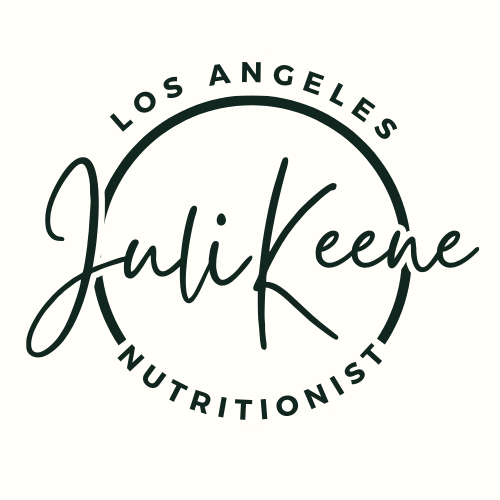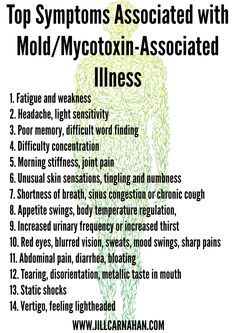In recent years, the consensus among some experts has established that mold exposure from water-damaged buildings is a significant contributor to chronic illness. Our understanding of the intricate ways in which mycotoxins from mold affect human health is still in its early stages, but research is beginning to shed light on this issue. Leading doctors and other healthcare practitioners on the cutting edge of their field are diligently studying and sharing their insights. Regrettably, the majority of conventional healthcare providers in the US remain largely uninformed about the harmful effects of mold or are in a state of denial, leaving patients feeling gaslit as I felt after years of suffering with mold illness. Thankfully, a small group of dedicated doctors and professionals are raising awareness and establishing organizations to educate the public about mycotoxins, mold, and their detrimental impact on the body. Dr Richie Shoemaker, Dr Neil Nathan and Dr Jill Carnahan come to mind. I reached out to Dr Carnahan around 2014 by email and she was kind enough to respond while going through her own mold illness journey. I was lucky enough to find Dr Shoemaker’s groundbreaking book “Surviving Mold” in the waiting room of yet another integrative doctors office as I was desperate to figure out what was making me and my child so sick. That book led me to our eventual healing. That book may have saved my life as it brought the possibility of mold causing illness into my awareness. I had been praying for answers, scouring the internet, spending every dime on doctors who insisted it was all in my mind, and I was just tired of the hopelessness and symptoms that persisted no matter what I did to recover. I know now that I would not ever have improved, my illness would not have stopped progressing, until I moved out of that water damaged, moldy, mycotoxin filled home. This is so dangerous when so sick with the symptoms listed below because the last thing you want to do is leave your home. But I am convinced that this started my recovery from mold illness and severe illness that lasted more than 4 years.
Mold illness, often referred to as mold toxicity, is a hidden culprit that can be responsible for a range of health conditions, including autoimmune diseases like Hashimoto’s and Sjogren’s, as well as issues related to brain function, hormone regulation, the endocrine system, mood disorders, gut problems, fatigue, insomnia, migraines, and I suspect more including cancer. Recent studies even suggest that mold exposure might be a significant contributing factor to dementia and Alzheimer’s disease.
Dr. Jill Carnahan, a leading authority on mold illness, draws attention to the startling correlation between mold and dementia in Finland. She states, “A considerable number of homes in Finland are thought to have mold. Mold can cause brain abnormalities, systemic inflammation, and changes in the permeability of the blood-brain barrier. Not only are Finnish homes breeding grounds for mold, but researchers also believe that other factors may be exacerbating this alarming situation.”
Dr. Carnahan goes on to emphasize, “Prolonged exposure to such toxins through inhalation or ingestion can lead to systemic inflammation, potentially resulting in chronic inflammatory response syndrome (CIRS), which has been linked to dementia. Scientists have even identified Inhalational Alzheimer’s as a distinct subtype. Unfortunately, many doctors do not include mold in their diagnostic considerations. As a result, mold exposure often goes undetected for years and is occasionally misdiagnosed.” Link to Dr. Carnahan’s article
Recognizing the Symptoms of Mold Illness
The symptoms of mold illness can encompass a wide range of health issues, such as:
- Brain Function: Memory loss, confusion, emotional and behavioral disturbances, and a decline in everyday cognitive performance.
- In some people Mold Rage: Irritability, Anger Amplified
- Respiratory Problems: Persistent coughing, shortness of breath, and chest tightness.
Weakened Immune System: Frequent illness and a compromised ability to fight infections. - Digestive Disorders: Irritable bowel syndrome (IBS), constipation, and stomach discomfort, Leaky Gut, S.I.B.O., Reflux, Ulcers,
- Static Shocks, Panic Attacks,
- Bladder Issues, Interstitial Cystitis, Urinary Frequency, Pain With Urination, Inability to Urinate
- Muscle Weakness: Chronic fatigue, joint pain, and stiffness, Muscle Tension, Cramps,
- Mood Changes: Depression, anxiety, or a loss of motivation.
- Headaches and Migraines, Buzzing, or Ringing in Ears
- POTS Symptoms, Dysautonomia, Heavy Legs,
- Mast Cell Issues, MCAS, Allergies, Itchy Eyes, Puffy Eyes,
- Issues with Blood Pressure, Dizziness, Fainting, Heart Palpitations,
- Insomnia and Severe Fatigue, a Feeling of Tired and Wired
- Nausea, Vomiting, and Rapid Weight Gain or Acute Weight Loss
- Hormonal Imbalances: PMS, hot flashes, night sweats, and skin rashes.
- Thyroid Issues: Symptoms of Graves or Hashimoto’s or both alternating
- Many more…
Personal Experience with Mold Illness
Around 2014, my family and I endured a harrowing experience when exposed to mold in a rental home. Determining the cause of our worsening health and subsequently testing ourselves and our living environment was a daunting challenge. It took several years for us to regain our health, and some issues persist. Mold-related autoimmune issues forced both of us to rely on medications, like thyroid hormones, midodrine, steroids like fludrocortisone and others for the POTS symptoms (aka dysautonomia) we got. Medication use was not an issue for use before severe mold exposure. In my clinical nutrition practice, where I’ve specialized in complex metabolic and nutritional challenges for many years, I’ve increasingly encountered patients with long-term chronic illnesses that defy resolution. It often feels like a game of “whack-a-mole” as different symptoms arise, distracting from the root cause: mold illness. In fact, I’ve observed individuals struggling with conditions like yeast overgrowth, interstitial cystitis, chronic fatigue, and SIBO who are, in reality, dealing with underlying, chronic, and acute mold illness. We could see some mold in our bathroom around the shower, in the grout, and on the shower ceiling, which I would promptly scrub away (do not do this as you will inhale the mycotoxins that you release) but most of the danger was hidden behind our walls. The landlord was quick to paint over any mold and denied it was an issue later. We wound up battling it out in court as she evicted us for “complaining about the mold” rather than taking responsibility. I often say that I know mold sick people don’t recover until mold exposure is addressed. In that way the eviction was a gift. It forced us to get out of that deathtrap home.
One telltale sign of mold illness, among the myriad of symptoms, is rapid weight gain. In my case, I went from a stable weight of 125 pounds to 165 pounds during my recovery from mold illness, despite having given birth to my daughter. In a future blog, I’ll delve into nutrition strategies for managing mold illness. However, it’s worth noting that individuals with mold illness often gravitate toward sugary, refined carbohydrates and sugar-laden foods. Mold, Candida, and other yeasts form a symbiotic relationship, compelling us to consume more sugar, which sustains their growth. If you notice a thick white or brownish coating on your tongue or frequently experience genital yeast infections, it’s highly probable that you’re dealing with yeast overgrowth. A blood or culture test can confirm this. Feel free to leave a comment if this information has been helpful or if you have further questions.
Additional Resources and Personal Insights
If you’re interested in learning more about my personal journey with mold illness and our recovery, I’ve started to document it on my YouTube channel @LosAngelesNutritionist or Juli Keene Nutritionist. https://www.youtube.com/@losangelesnutritionist
I also want to acknowledge Dr Shoemaker, Dr Neil Nathan (see his book) and Dr. Jill Carnahan for her contributions to this topic. You can explore her work on mold illness and related issues on her website here. She was one of the first I heard discussing it after I found Dr Ritchie Shoemaker’s book.
Mold illness is a complex and often misunderstood health issue with wide-ranging consequences. As someone who has had personal experience with healing from it, I am grateful and dedicated to raising awareness and providing any insights I can into addressing mold-related health challenges. My first recommendation is to do whatever you can to get out of the exposure. I know how hard this is. We spent almost two full years essentially homeless going from couch surfing to hotels when we could and from doctor to doctor trying to get our health back. Finding a mold free rental in Los Angeles is harder than most would think. Rental properties are not usually taken care of like private homes. I have also seen many, multi-million dollar homes have high levels of mold and mycotoxins. Mold is not about cleanliness it’s about knowledge and ineffective building and maintenance of buildings with water damage.


Where’s the 2 ingredient tortilla recipe?
the 2 ingredient tortilla is something I reposted on Instagram so go back to that post on Instagram and there will be a name of a page I credited with the recipe and photo and the link is on HER BIO on instagram or on her blog. Her Instagram page is called @paleoglutenfreeeats. I know it can be tricky. The link on this page is for the FREE MOLD SUMMIT.